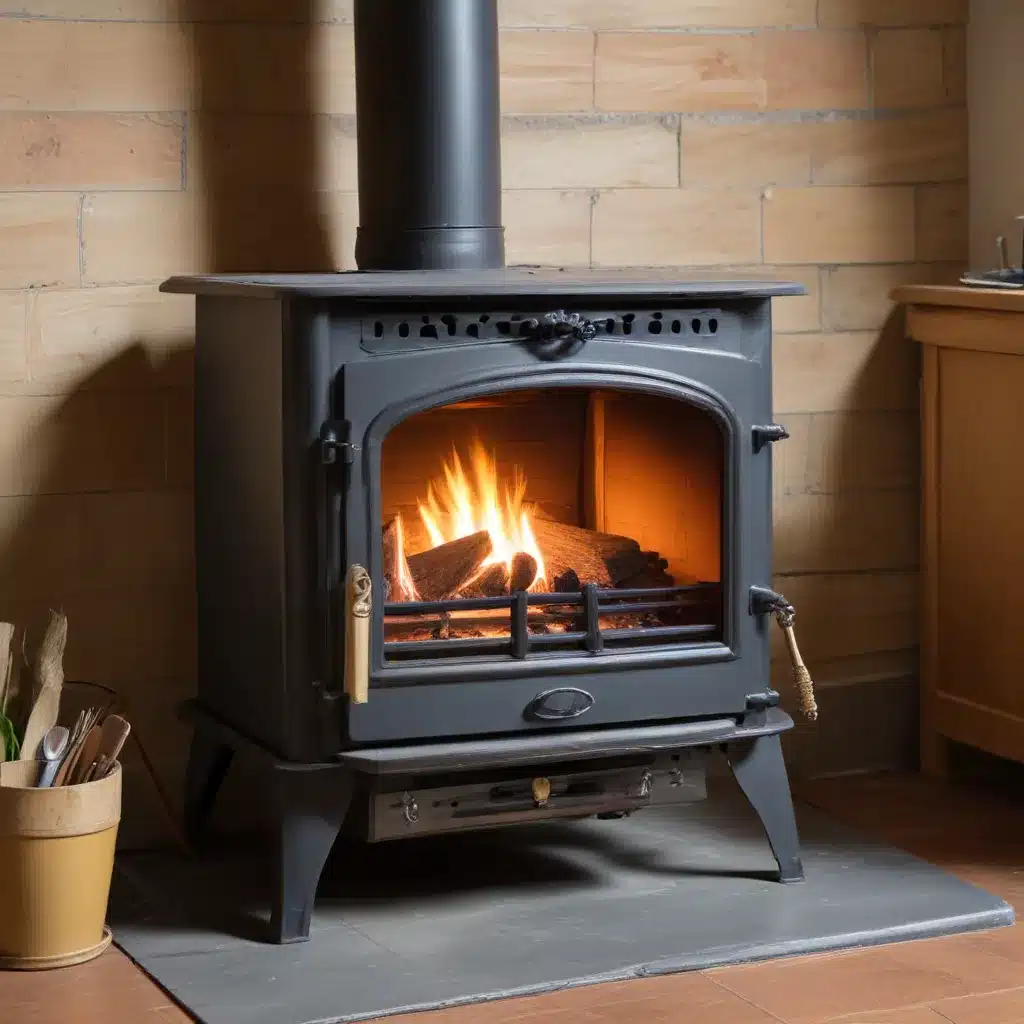
Reviving the Heart of Your Home: Mastering Wood Stove Maintenance
As a seasoned expert in the world of wood stoves and heating solutions, I’m thrilled to share with you the secrets to breathe new life into your trusty stove. Whether your wood stove is showing its age or you’re looking to maximize its efficiency, this comprehensive guide will equip you with the knowledge and practical tips to restore it to its former glory.
Understanding the Anatomy of a Wood Stove
Before we dive into the restoration process, it’s important to familiarize ourselves with the key components of a wood stove. The firebox, where the wood is burned, is the heart of the system. The chimney or flue facilitates the proper circulation of smoke and hot air, while the air intake controls the flow of oxygen to the fire. Gasketing around the door and other seals help maintain an airtight environment for optimal combustion.
Diagnosing Common Wood Stove Issues
The first step in any restoration journey is to identify the specific problems your wood stove is facing. Common issues may include:
- Worn Gaskets: Over time, the seals around the door and other openings can become brittle and compromised, leading to air leaks and reduced efficiency.
- Cracked or Damaged Firebrick: The refractory bricks lining the firebox can crack or deteriorate, compromising the stove’s ability to contain the fire and heat effectively.
- Corrosion or Rust: Exposure to moisture and harsh environmental conditions can cause the metal components of the stove to rust, affecting its structural integrity and appearance.
- Buildup of Creosote: Inadequate cleaning can lead to the accumulation of creosote, a flammable byproduct of incomplete combustion, within the stove and chimney.
Preparing for the Restoration Process
Before you embark on your wood stove restoration journey, it’s crucial to ensure your safety and that of your home. Conduct a thorough inspection to identify any potential hazards, such as the presence of asbestos or lead-based paint. If you have any concerns, it’s best to consult a professional to handle the more complex aspects of the restoration.
Tackling Wood Stove Maintenance and Repairs
Replacing Worn Gaskets
Properly sealing the door and other openings is essential for maintaining the airtight environment required for efficient wood stove operation. Start by carefully removing the old gaskets, ensuring that the surface is clean and free of any residue. Apply a high-temperature gasket cement to the designated areas and press the new gaskets firmly into place, following the manufacturer’s instructions.
Repairing Cracked Firebrick
Damaged or deteriorating firebrick can compromise the structural integrity of your wood stove and its ability to contain the heat effectively. Carefully remove any loose or crumbling bricks and use a high-temperature refractory mortar to secure replacement bricks in place. Ensure that the new bricks are properly fitted and sealed to prevent air leaks.
Addressing Rust and Corrosion
If your wood stove is showing signs of rust or corrosion, it’s important to address the issue promptly to prevent further damage. Start by thoroughly cleaning the affected areas, using a wire brush or sandpaper to remove any flaking paint or oxidation. Apply a high-heat resistant paint to the cleaned surfaces, following the manufacturer’s instructions for proper application and drying times.
Maintaining a Clean Chimney
Regular chimney cleaning is essential for ensuring the safe and efficient operation of your wood stove. Use a sturdy chimney brush to dislodge any accumulated creosote, and consider installing a chimney cap or spark arrestor to prevent the buildup of debris and reduce the risk of sparks or embers escaping.
Optimizing Wood Stove Efficiency
Adjusting the Air Intake
The air intake, often a lever or dial on the front of the stove, plays a crucial role in controlling the flow of oxygen to the fire. By adjusting the air intake, you can fine-tune the combustion process, achieving a more efficient and cleaner burn.
Choosing the Right Firewood
The type and moisture content of the firewood you use can have a significant impact on the performance and efficiency of your wood stove. Opt for well-seasoned, dense hardwoods that burn hotter and produce less creosote buildup.
Maintaining a Consistent Burn
Establishing a consistent burn pattern is essential for maximizing the efficiency of your wood stove. Avoid letting the fire die down completely, as this can lead to the buildup of creosote. Instead, maintain a steady, medium-intensity fire by adding smaller, well-seasoned logs at regular intervals.
Embracing the DIY Approach (or Not)
While restoring an old wood stove can be a rewarding DIY project, it’s important to weigh the pros and cons before embarking on the journey. Consider the costs associated with the necessary tools, materials, and potential time off work to complete the restoration yourself. If the project seems too daunting or the risks outweigh the potential savings, it may be worth considering hiring a professional wood stove technician to handle the restoration process.
Conclusion
Breathing new life into your wood stove is a fulfilling endeavor that can not only improve its performance but also enhance the overall aesthetic and ambiance of your living space. By mastering the art of wood stove maintenance and restoration, you’ll be able to enjoy the cozy warmth and efficiency of your trusty heating companion for years to come. Remember, safety should always be your top priority, and don’t hesitate to seek the guidance of a professional when needed. Happy restoring!


